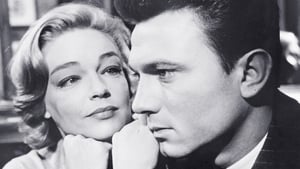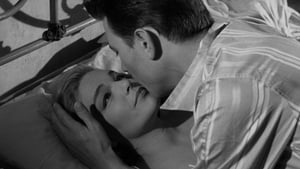Contact: [email protected]
Video Sources 0 Views

Synopsis
A Room at the Top 1959 Review: A Classic Drama Reimagined in Color

Introduction
In the vast landscape of cinematic history, certain films stand as pillars of artistic achievement, transcending time to captivate audiences across generations. Among these treasures is A Room at the Top (1959), a poignant drama that delves into the complexities of love, ambition, and societal expectations. Directed by Jack Clayton, this timeless masterpiece has recently undergone a transformation with the introduction of early colorization techniques, offering viewers a fresh perspective on its enduring brilliance. Join us as we journey through the corridors of privilege and passion in A Room at the Top 1959 and explore the profound impact of colorization on its evocative storytelling.
Check The Full Colorized Movies List
Check Our Colorized Movies Trailer Channel
Understanding A Room at the Top 1959: Director, Cast, and Genre
At the helm of A Room at the Top stands director Jack Clayton, whose keen eye for human drama and social commentary infuses every frame of the film with depth and resonance. Leading the cast is Laurence Harvey, delivering a tour de force performance as Joe Lampton, a working-class man with aspirations of climbing the social ladder. Alongside Harvey, Simone Signoret shines as Alice Aisgill, a married woman with whom Joe embarks on a passionate affair. This captivating blend of romance and social realism places A Room at the Top firmly within the realm of classic drama, where the complexities of the human experience are laid bare for all to see.
Exploring the World of A Room at the Top 1959: Plot and Characters
Set in the industrial town of Warley, England, A Room at the Top follows the journey of Joe Lampton, a young man determined to escape his humble origins and make a name for himself in the world. Through a series of calculated maneuvers and seductive charm, Joe ingratiates himself into the upper echelons of society, ultimately finding himself torn between the allure of wealth and the depths of true love. As Joe navigates the treacherous waters of ambition and desire, he must confront the harsh realities of class division and personal sacrifice, leading to a devastating climax that leaves an indelible mark on both his life and the lives of those around him.
The Art of Film Colorization
Film colorization, once a controversial practice, has evolved into a sophisticated art form, offering filmmakers new avenues for expression and audiences fresh perspectives on beloved classics. By infusing black-and-white films with vibrant hues and rich textures, colorization breathes new life into old favorites, inviting viewers to experience them in a whole new light. Early colorization techniques, while still in their infancy, have already shown tremendous promise in enhancing the visual appeal of classic films, allowing audiences to connect with them on a deeper, more immersive level.
Early Colored Films: A Brief History
The history of colored films stretches back to the earliest days of cinema, with filmmakers experimenting with various techniques to bring color to the silver screen. From hand-tinted frames to two-color processes like Technicolor, the quest for vibrant, lifelike imagery has been a driving force in the evolution of filmmaking. By the mid-20th century, advances in color film technology had paved the way for a new era of cinema, with directors embracing color as a powerful tool for storytelling and visual expression.
A Room at the Top 1959 and Its Early Colored Version
The decision to release A Room at the Top (1959) in a colorized format marks a bold new chapter in the film’s storied history. While purists may argue that colorization alters the intended aesthetic of the original black-and-white film, others see it as an opportunity to breathe new life into a timeless classic. In the case of A Room at the Top, colorization serves to enhance the film’s evocative visuals and emotional resonance, allowing viewers to immerse themselves fully in the world of Joe Lampton and Alice Aisgill.
The Debate Over Film Colorization
As with any technological advancement in the world of cinema, the practice of film colorization has sparked debate among filmmakers, critics, and audiences alike. While some argue that colorization compromises the artistic integrity of black-and-white films, others see it as a valuable tool for preserving and reimagining cinematic classics for future generations. Ultimately, the decision to colorize a film is a matter of personal preference and artistic vision, with filmmakers weighing the pros and cons of each approach carefully.
Examining A Room at the Top 1959 as an Early Colored Film
Viewing A Room at the Top (1959) in its early colored iteration offers a fresh perspective on the film’s timeless themes and timeless performances. The addition of color serves to enhance the film’s visual palette, heightening the emotional impact of key scenes and immersing viewers in its richly textured world. From the industrial landscapes of Warley to the intimate moments between Joe and Alice, colorization adds a new dimension to A Room at the Top, inviting audiences to rediscover its beauty and complexity with fresh eyes.
Influence and Legacy: A Room at the Top 1959’s Impact on Cinema
A Room at the Top (1959) holds a special place in the pantheon of cinematic classics, revered for its gripping narrative, stellar performances, and timeless relevance. Its exploration of class, ambition, and desire has inspired generations of filmmakers, influencing countless works across a variety of genres. Moreover, the film’s enduring popularity has cemented its status as a cultural touchstone, with audiences around the world continuing to be moved by its powerful storytelling and universal themes.
Director’s Cinematic Legacy: Beyond A Room at the Top 1959
For director Jack Clayton, A Room at the Top (1959) represents just one chapter in a storied career marked by innovation and artistry. From his early days as a filmmaker to his later work on such classics as The Innocents and The Great Gatsby, Clayton’s influence looms large over the world of cinema, inspiring generations of directors to push the boundaries of storytelling and visual expression. His legacy lives on in the works of filmmakers who continue to be inspired by his pioneering spirit and uncompromising vision.
Themes Explored in A Room at the Top 1959
At its core, A Room at the Top (1959) is a meditation on the human condition, exploring the universal themes of love, ambition, and sacrifice with depth and nuance. Through its complex characters and thought-provoking narrative, the film invites viewers to reflect on their own desires and aspirations, challenging them to confront the harsh realities of class division and social inequality. At once intimate and epic, A Room at the Top stands as a timeless testament to the power of cinema to illuminate the human experience in all its complexity.
Reception and Controversy Surrounding A Room at the Top 1959
Upon its release, A Room at the Top (1959) garnered widespread critical acclaim, with audiences and critics alike praising its bold storytelling and powerhouse performances. The decision to release a colorized version of the film has sparked debate among purists, with some arguing that colorization compromises the integrity of the original work. However, for many viewers, colorization offers a fresh perspective on a beloved classic, allowing them to experience its beauty and power in a new and exciting way.
Where to Watch A Room at the Top 1959 Online
For those eager to experience the magic of A Room at the Top (1959) in its early colored iteration, the film is readily available on popular streaming platforms such as Netflix, Amazon Prime, and Hulu. Whether viewed in its original black-and-white format or the newly colorized version, A Room at the Top promises to captivate and inspire audiences with its timeless tale of love, ambition, and the human spirit.
FAQs About A Room at the Top 1959
- Why was A Room at the Top (1959) chosen for colorization?
- The decision to colorize A Room at the Top was driven by a desire to introduce the film to a new generation of viewers and enhance its visual impact for modern audiences.
- Does the colorized version alter the film’s intended atmosphere?
- While purists may argue that colorization detracts from the film’s original aesthetic, others contend that it adds a new dimension to the viewing experience, enriching the film’s atmosphere and mood.
- Is A Room at the Top (1959) suitable for audiences of all ages?
- While the film deals with mature themes and contains some adult content, it is generally regarded as suitable for mature audiences.
Conclusion
As we bid farewell to the world of A Room at the Top (1959), we are reminded of the enduring power of cinema to transport us to new worlds and illuminate the human experience in all its complexity. Whether viewed in its original black-and-white format or the newly colorized version, A Room at the Top stands as a timeless testament to the artistry and vision of its creators, inviting audiences to rediscover its beauty and power for generations to come. So dim the lights, settle in, and prepare to be swept away by the timeless magic of A Room at the Top.















